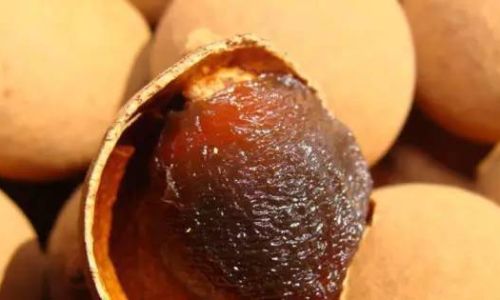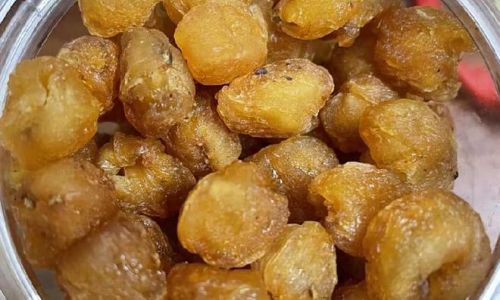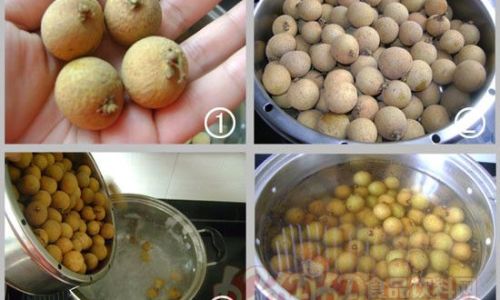Introduction
In the realm of culinary arts, traditional dishes often carry a rich history, steeped in generations of cultural heritage and culinary wisdom. One such dish that stands out is the fermented grain and taro combination, a delightful blend of flavors that combines the earthy richness of taro roots with the unique tanginess of fermented grains. This dish, often referred to simply as “fermented grain and taro” or a variant name depending on regional dialects, is a staple in many parts of Asia, particularly in areas where both ingredients are abundant.
Making fermented grain and taro dish may seem like a complex endeavor at first, but with the right guidance and patience, it can become a rewarding culinary pursuit. This comprehensive guide aims to demystify the process, walking you through each step from sourcing ingredients to serving the final dish. By the end, you’ll not only understand how to make this traditional delicacy but also appreciate the nuances that make it so special.
Chapter 1: Understanding the Ingredients
Before diving into the recipe, it’s crucial to understand the key ingredients: fermented grains and taro.
1 Fermented Grains
Fermented grains, often referred to as “jiu zhao” in Chinese or “sake lees” in English, are a byproduct of the fermentation process used to make alcoholic beverages like rice wine, beer, or sake. These grains are rich in probiotics, vitamins, and minerals, giving them a unique tangy flavor and aroma. They are commonly used in Asian cooking as a flavor enhancer and preservative.
Different types of fermented grains can be used, depending on the region and the specific recipe. Some common varieties include:
- Rice Wine Lees: Derived from the fermentation of rice to make rice wine, these lees have a mild, slightly sweet flavor.
- Beer Lees: Resulting from the brewing of beer, beer lees tend to be more acidic and robust in flavor.
- Sake Lees: Similar to rice wine lees but with a more refined texture and flavor, sake lees are often preferred for dishes requiring a subtler tang.
When selecting fermented grains, look for those that are fresh, have a pleasant aroma, and are not overly dry or moldy. It’s also essential to ensure they come from a reputable source to avoid any health risks associated with improper fermentation.
2 Taro
Taro (Colocasia esculenta), a tropical root vegetable, is the other star ingredient in this dish. Its skin can range from brown to purple, while the flesh is typically white or cream-colored, with a starchy, slightly sweet flavor. Taro is known for its nutritional benefits, including high fiber content, vitamins, and minerals.
When choosing taro, look for firm, unblemished roots with smooth skin. Avoid those with soft spots, cracks, or mold. Fresh taro should have a slight earthy aroma and feel heavy for its size, indicating good starch content.
Chapter 2: Preparation and Tools
Before starting the cooking process, ensure you have all the necessary tools and ingredients ready.
1 Tools
- Knifes: A sharp knife for peeling and chopping taro.
- Peeler: A vegetable peeler to remove the taro skin efficiently.
- Cutting Board: A sturdy cutting board to work on.
- Large Pot: For boiling the taro.
- Colander: To drain the boiled taro.
- Mixing Bowls: For mixing the ingredients.
- Spatula: For stirring and folding the mixture.
- Steamer: For steaming the final dish.
- Ladle: For serving.
2 Ingredients
- Fresh Taro: Approximately 1 kilogram (2.2 pounds), peeled and cubed.
- Fermented Grains: About 200 grams (7 ounces), rinsed and drained.
- Salt: To taste, for seasoning.
- Sugar: Optional, to balance the tanginess of the fermented grains.
- Water: For boiling the taro.
- Oil: A neutral oil like vegetable or canola oil for frying (optional, for a variation of the dish).
- Aromatics: Garlic, ginger, and green onions (optional, for added flavor).
Chapter 3: Step-by-Step Recipe
Now, let’s dive into the step-by-step recipe for making fermented grain and taro dish.
1 Preparing the Taro
- Peeling the Taro: Begin by peeling the taro roots using a vegetable peeler. Wear gloves to protect your hands from the itchy sap that some varieties of taro can produce.
- Cubing the Taro: Once peeled, cut the taro into small, uniform cubes. The size will depend on your preference, but aim for pieces that are about 1-2 inches in diameter for even cooking.
2 Boiling the Taro
- Filling the Pot: Fill a large pot with enough water to fully submerge the taro cubes.
- Boiling: Bring the water to a rolling boil over high heat.
- Adding Taro: Carefully add the taro cubes to the boiling water.
- Cooking Time: Boil the taro until they are tender but still hold their shape, typically around 10-15 minutes. Test for doneness by piercing a cube with a fork; it should give easily but not fall apart.
- Draining: Once cooked, drain the taro using a colander and let it cool slightly.
3 Preparing the Fermented Grains
- Rinsing: Rinse the fermented grains under cold running water to remove any excess starch or impurities.
- Draining: Drain the rinsed grains well using a sieve or colander. Squeeze out any excess water if necessary.
4 Mixing the Ingredients
- Combining: In a large mixing bowl, combine the boiled and cooled taro cubes with the rinsed and drained fermented grains.
- Seasoning: Add salt to taste. If you prefer a sweeter dish, you can also add a small amount of sugar to balance the tanginess of the fermented grains.
- Mixing: Gently mix the ingredients together until well combined. Be careful not to break the taro cubes.
5 Steaming the Dish
- Preparing the Steamer: Set up a steamer with enough water to steam for about 30 minutes without running dry.
- Placing the Mixture: Transfer the mixed taro and fermented grains into a steaming dish or tray that fits into your steamer.
- Steaming: Cover the steamer and steam the dish for about 20-30 minutes, or until the flavors have melded and the mixture is heated through.
6 Serving (Optional Variations)
- Plain Serving: Once steamed, remove the dish from the steamer and let it cool slightly before serving. It can be enjoyed as is, with its unique blend of flavors.
- Fried Variation: For a crispy variation, you can lightly fry the steamed mixture in a small amount of oil until golden brown on all sides. This adds a delightful crunch to the dish.
- Aromatics: To elevate the flavor, you can sauté garlic, ginger, and green onions in a little oil and pour this fragrant oil over the steamed dish before serving.
Chapter 4: Tips and Troubleshooting
Making fermented grain and taro dish can sometimes present challenges, but with these tips, you’ll be able to troubleshoot and perfect your recipe.
1 Tips for Success
- Fresh Ingredients: Always use fresh, high-quality ingredients for the best flavor.
- Even Cooking: Ensure the taro cubes are uniform in size for even cooking.
- Taste Testing: Taste the mixture before steaming to adjust the seasoning.
- Gentle Mixing: Handle the taro gently to avoid breaking the cubes.
2 Troubleshooting
- Taro is Too Soft: If the taro becomes too soft during boiling, reduce the cooking time slightly next time.
- Mixture is Too Dry: If the mixture seems dry after mixing, you can add a small amount of water or broth to achieve your desired consistency.
- Strong Tanginess: If the dish is too tangy for your taste, add a bit more sugar or salt to balance the flavors.
Chapter 5: Cultural Significance and Variations
The fermented grain and taro dish is not just a culinary delight but also carries cultural significance in many Asian communities.
1 Cultural Context
In regions where both ingredients are abundant, this dish is often associated with traditional festivals, celebrations, and family gatherings. It symbolizes abundance, fertility, and the harmony between nature and human effort. The use of fermented grains also reflects the wisdom of preserving and utilizing food resources efficiently.
2 Regional Variations
Different regions have their unique variations of this dish. In some areas, additional ingredients like pork, shrimp, or mushrooms are added for extra






0 comments